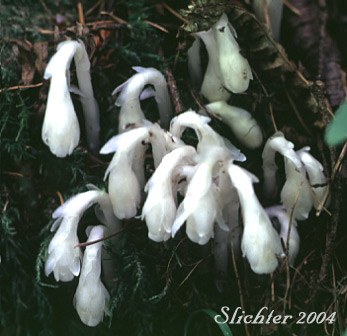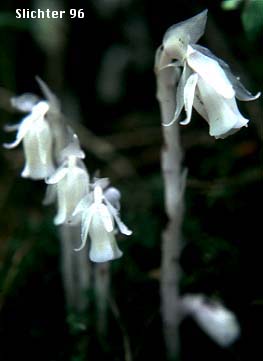
 Characteristics:
Characteristics:
Attractive due to its ghostly color and presence in mostly dark places on the forest floor, indian pipe is a saprotroph. It typically consists of clusters of erect, unbranched stems arising 10-30 cm high from a dense clump of matted roots. The stems are white or occasionally pinkish and becomes black after flowering. The leaves along the stem are scale-like and are linear, lanceolate or ovate in shape.
The single flower is up to 2 cm long and nods before and while in bloom, later becoming erect in fruit. The 2-4 sepals are lanceolate in shape and deciduous. The 5 or 6 petals are oblong, overlapping and tardily deciduous and lined within with hairs. The style is included within the corolla and the stigma is discoid-lobed. 10-12 stamens are present.
Indian pipe is found in humus soils in dark, shaded woods.
Indian pipe may be found from Alaska south to northern California and east to the Atlantic Coast.